AND NOW, ON TO THE MAIN EVENT
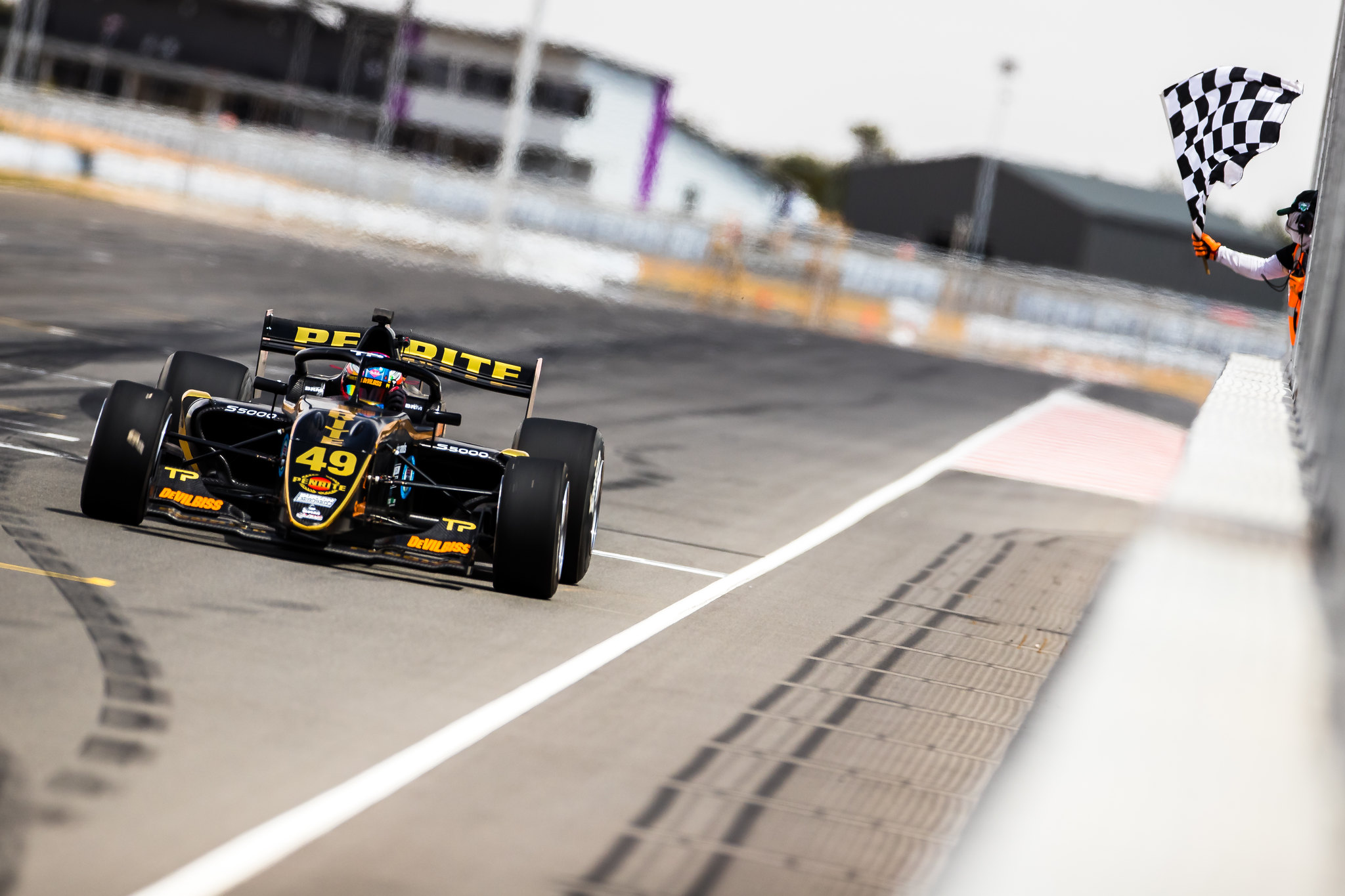
THE FIRST TWO S5000 events are done, with the series now building towards a championship proper in 2020. So what’s the verdict after the first two events? The Race Torque speaks with THOMAS RANDLE, who is well-qualified to offer his verdict, to find out.
WORDS: Richard Craill IMAGES: S5000 / Daniel Kalisz
WITH A VERY public two-event launch program now complete, Australia’s most ambitious home-grown category since the debut of the five-litre V8 formula in 1993 now moves from development to building a grid for the inaugural full season in 2020.
S5000s very public baptism of fire concluded at The Bend Motorsport Park at the weekend, adding a high speed aero track to Sandown on the check list titled: ‘So how will this thing work, anyway?’.
You could hardly have had two different circuits for a proof-of-concept launch of the new category, either. Sandown is notoriously bumpy, famed for being a circuit where horsepower is king and where aero, save for perhaps the famous old Rothmans Rise, means little.
The Bend is the opposite. There are bumpier billiard tables in the world and the rapid succession of high speed, high commitment and high aero corners offer a stark contrast to the Melbourne venue.
The S5000 product at Sandown was hard to fault, even if the feature race was curtailed following Alex Davison’s monster shunt on the back straight (though ironically it was another proof of concept in action; the cars are very safe). The cars danced around, wheel spinning everywhere on a low-grip surface and they could run close through the slow speed corners allowing for overtaking and some sensational racing. It was a big tick.
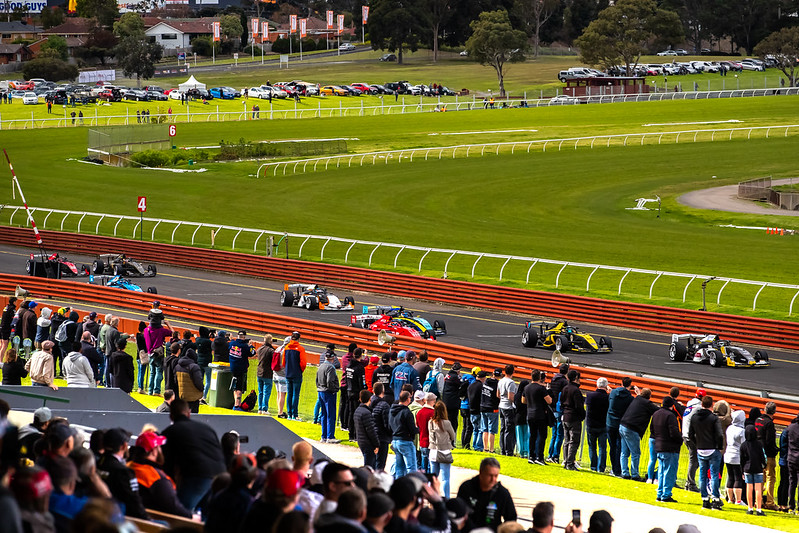
The Bend was different, though running in isolation the cars were no less spectacular. On the open expanses of the plains South East of Adelaide, S5000 cars were finally able to be properly released and at full noise they were a sight and sound for the senses. The 560-hp V8 thrump echoing across to the pit building; the drivers dancing the cars on the limit through the brilliant turn seven-eight-nine complex of ever-tightening rights.
The racing was slightly different and while in our eyes still received a comfortable pass mark – much more comfortable than our high school grades, for example – proved there remains space to develop the category and the product it offers further.
The Bend exposed several truths about how the category will go racing next year, the first being that the opening laps are going to be wild, everywhere.
On a hard compound Hoosier Tyre that takes multiple laps to generate temperature, the race start and first few laps are an exercise in hanging on to a wild animal as it tries to bite your head off – in a field of similar wild animals trying to do the same thing.
Secondly, getting track position on the opening laps will be critical because though you can pass, in some instances it’s not easy.
The Bend showed that the car’s natural understeer balance and a rearward bias towards both weight and downforce means following through high-speed corners is not simple.
In a way, the category’s stated aim of making the cars very difficult to drive and exciting to watch – and they are – has perhaps slightly compromised the raceability through high-speed stuff because it’s tough to follow.
Another trade-off of the lack of real aero is the lack of a meaningful tow; The Bend’s front straight is more than a thousand metres long yet the cars’ lack of drag also means the hole in the air they leave for the car behind isn’t huge either. Passing at the Bend required being very close out of turn eighteen and then significant intestinal fortitude under brakes into turn one to send it.
More often than not, it was actually a run up the hill through five and six that promoted better racing and overtaking, while Sandown’s slower entry to the main straight helped with turn one passing at the Melbourne venue.
You had to earn your positions gained on the weekend, which isn’t a bad thing, moreso just a thing. Even with 10 cars there was still overtaking.. when the full field races next year the natural extension of the grid will mean more battles, in more places through the field.
So if Sandown was a 9/10 for racing, The Bend was at least a 6, perhaps a 7 with room for more to come as the class evolves.
But that was the whole point of these two ‘pre-season’ events, anyway.
**
FEW DRIVERS to have raced the S5000 up to this point are perhaps better qualified to comment on the behaviour of the car than Thomas Randle, the 23-year-old Melbourne-based, piano-playing star who recently stood on the Supercars podium at the Sandown 500 thanks to a stunning Pirtek Enduro Cup debut with Tickford Racing in Lee Holdsworth’s Mustang.
But before he became a Touring Car driver, Randle plied his trade in open-wheelers; He won the 2014 Australian Formula Ford championship, was runner-up in F4 a year later and then won the Toyota Racing series in New Zealand in 2017. What’s more, he was a race winner in British Formula 3 and experienced the next-best thing to a Formula 1 car when he raced in the now-defunct Formula 3.5 V8 formula in 2016 – a car quicker at the time than GP2.
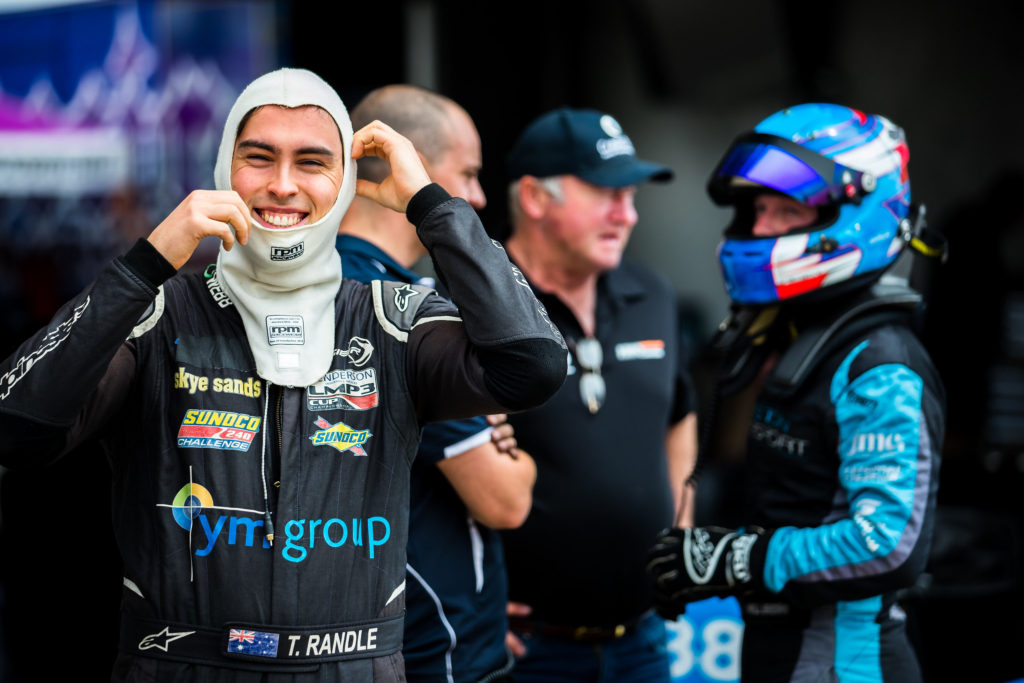
So, when it comes to ‘wings and slicks’, he’s qualified to speak.
“We had a few little niggles here and there but otherwise it’s great,” Randle spoke of his weekend at The Bend, running a Team BRM-prepared entry.
Randle, reunited with his F3 and F3.5 engineer Marcus Koch in the process, missed pole by 0.05 seconds when a last-lap flyer from Anton de Pasquale relegated the sister BRM car to second on the grid in the dying minutes of qualifying.
He then smoked the field in race one, winning by nearly 10 seconds and setting the quickest lap of the entire weekend (qualifying included) in the process. Seventh in the reverse top-eight second sprint proved both the competition level was high and that passing was tough, while contact with de Pasquale at turn one in the finale’ left him down the field.
Sixth at the end of lap one, Randle stormed through to fourth by lap two and then executed a brilliant pass on Will Brown to move to third four laps from home. Third became second after the race, de Pasquale penalised for his contact and a false start; Randle finishing locked on the gearbox of ultimate winner John Martin and wishing for another lap.
“(The) tub feels pretty safe, it’s much better than the first iteration that was back in 2017. With the Halo you feel very safe in the car and it’s a thick carbon tub.
“The braking package – it’s not F3-spec but that’s not what they’re going for. You’ve got long braking distances: I’m only braking 10, perhaps 20 meters later than a Supercar. Probably the only thing they need to work on is the Aero wash. I don’t know if this track highlights it more because all the passing zones here are after a high speed corner, so I don’t know if it exaggerates it here, but overall I think.. the centre of pressure of the car is towards the rear and I think the aero is more dominated at the rear.
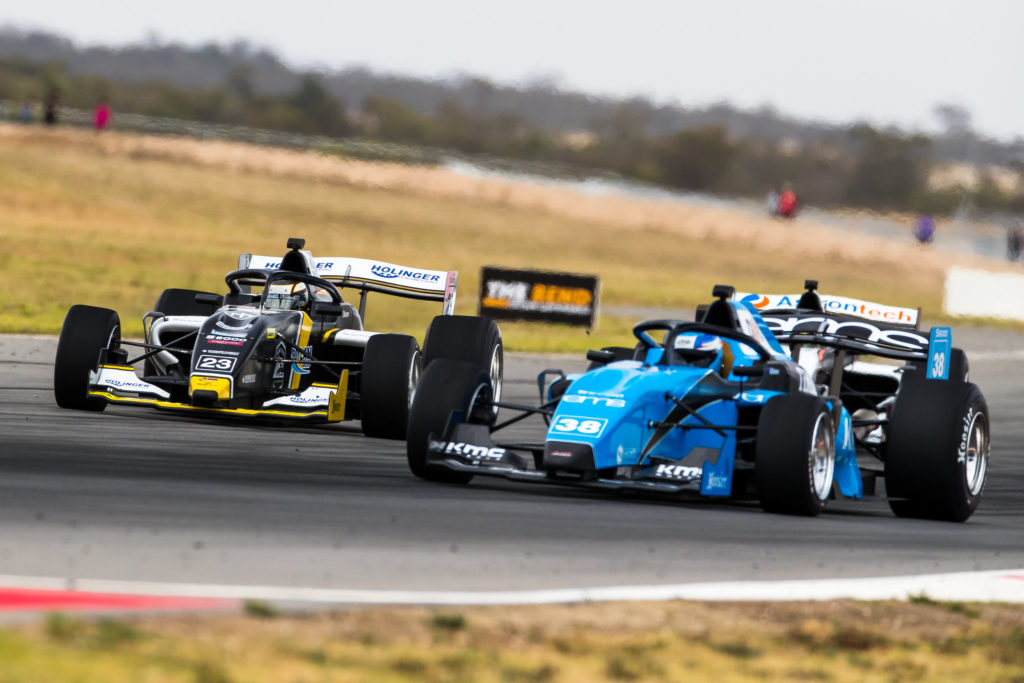
“When you’re on a lap with no cars around you generally have push, high speed push. So when you’re then behind a car which has fat rear tyres and a big rear wing and an undertray, you’ve got all that dirty air hitting a front wing which isn’t really all that effective.
“It’s the only thing that I can say they need to work on, whether they can get some more front aero on the car. Now whether that’s designing a new front wing – that comes with cost, people, time and expense. But this is a perfect test – it’s such a smooth track and open wheelers like smooth tracks, especially wings and slicks cars.”
Randle’s analysis was mirrored by others in the category which, by virtue of being a spec formula has the ability to tune the cars to help create the product as they see fit.
Sandown’s cold temperatures and tyre-warming issues, for instance, caused organisers to dial in a very low-interference traction control setting for The Bend to help the cars on cold rubber and opening laps. The TC was set low enough to not stop the cars from moving around as designed – anyone who saw them live knows that they’re still very physical cars to watch – but may have helped the cold tyre process.
When you’re then behind a car which has fat rear tyres and a big rear wing and an undertray, you’ve got all that dirty air hitting a front wing which isn’t really all that effective..
Randle on the challenges in following closely through high-speed corners.
A similar ECU setting to limit the cars to 6,000 RPM for race starts was another form of evolution, tested on Sunday to help aid clean starts for the full field. Other changes continue to be made on the fly – the whole intent of these two, non-championship races before the series proper launches a the Grand Prix next year.
Even then, two rounds are a small sample size on which to judge the overall product as a whole – it’ll take a full season on a variety of tracks before any potential changes can be investigated and implemented, if required.
Not that they would need to be wholesale, given how good the package is right out of the box.
“The car feels really good to drive,” Randle said. “Firstly, it’s a very reliable car. There’s a couple of gearshifting issues on the downshifting that they have been working on and to be honest, Thursday to Sunday – night and day better. I think everyone is pretty fresh to this category and I think with another 10 cars and some testing over the summer I think we’ll be in for a real treat next year.
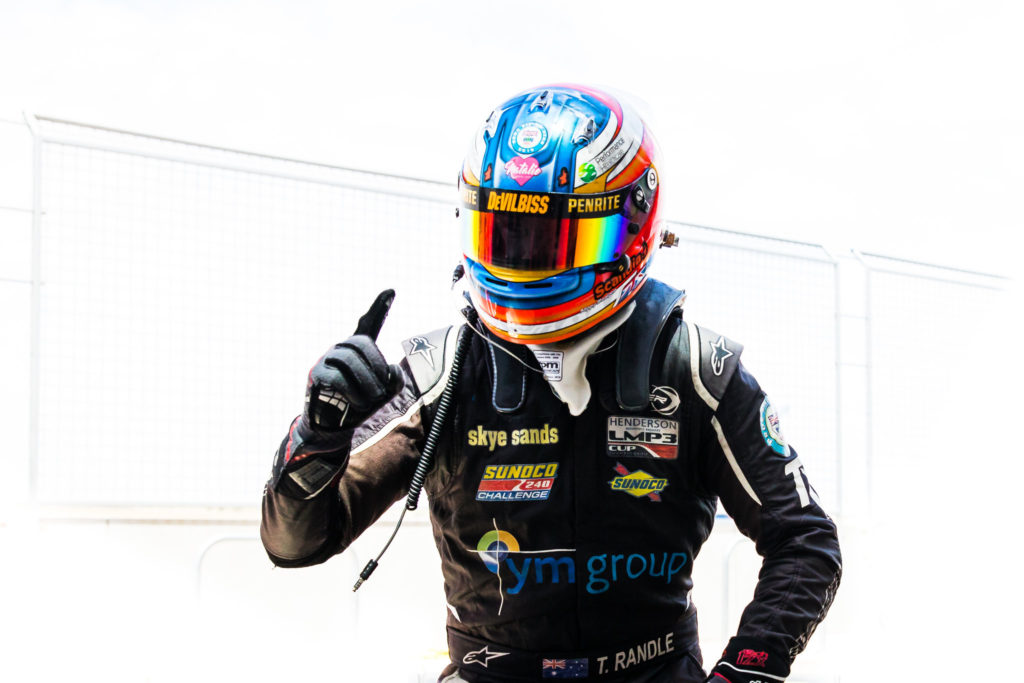
“I feel like we got the car pretty dialled in. In these cars you can’t take slow speed corners fast.. it’s a 800-plus kilo car, they haven’t got that much mechanical grip and it’s all about maximising the straight-line braking and maximising the car for the exit.
“I’ve driven Formula V8 3.5 and to be honest the power delivery feels pretty similar – it’s pretty similar and the only thing that feels similar. In a 3.5 you’ve got Carbon brakes and a set of them is 20,000 Euro… this is nowhere near that. We ran a set of pads pretty much the whole weekend. Considering this is one of the highest braking duration tracks we go to, it’s quite good. No one really complained of knock-off that I know of.”
Randle, however, did suggest there was one car it did compare too: his dad Dean’s title winning SAAB Sports Sedan – a 900-horsepower be-winged beast that Randle himself has raced on and off for the better part of six years.
“Yeah it is! (the same). I’ve driven the Sports Sedan here, the corner speeds and the vehicle dynamics.. the braking actually feels very similar. I do feel safer in this car, I have to admit! I feel more at home in one of these. They’re quite similar. The only difference is the power..”
**
ULTIMATELY it is impossible to say that the first two S5000 events were anything but an almost total success.
The cars were remarkably reliable given their early stage of development and the on-track support and hands-on work from key partners like Hoosier, Hollinger Engineering and InnoV8 – who downloaded data from every car following every session to analyse – will give the gurus behind the scenes plenty of information to learn for 2020.
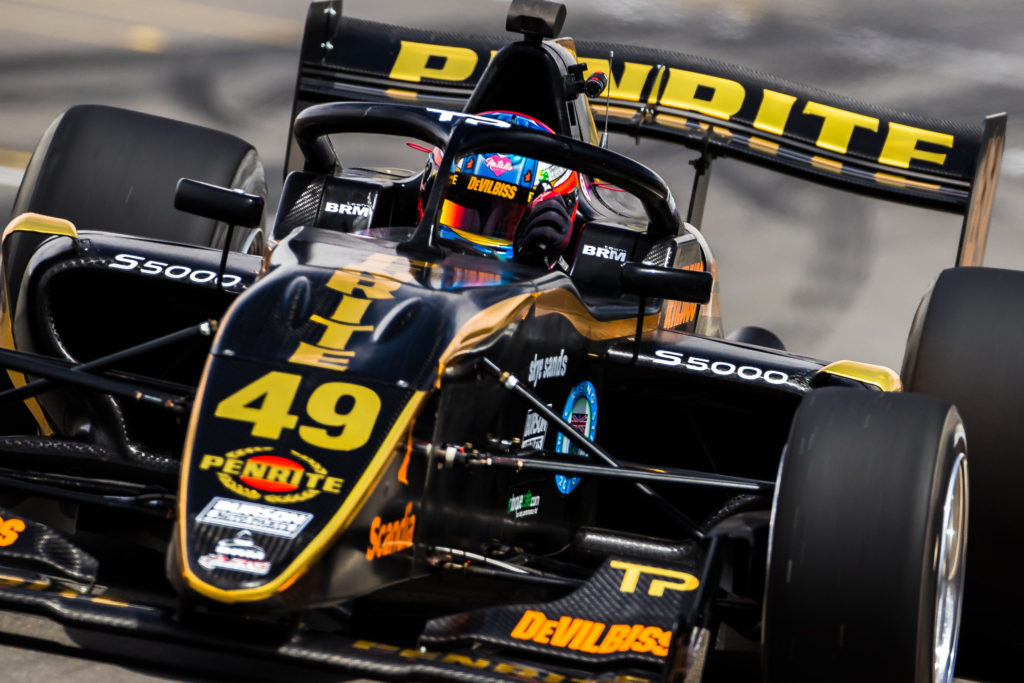
The cars tick the boxes from a show perspective, too. TCR may bring the brands to the track, but S5000 is and will be the Box Office; the cars are visceral, loud and exciting and 14 of them together will be a sight to behold at any track.
Lapping in the 1m41s, the cars were as quick as aero-leaden Formula 3 cars at The Bend already and with development will go quicker – at least a second better according to some; more according to others. But outright pace isn’t the final objective.
The box office comment isn’t an off-the-hand remark, either; S5000 clearly sold tickets at Sandown for their debut and they sold tickets at The Bend for the encore show. As part of the broader Shannons tour next year, it’s almost certain they’ll be the number one draw card that can brings back the crowds.
Even at the weekend, when the field had spread out and things had become processional, the cars remained captivating and that is there enlies the key appeal of the class. Like Formula One used to be, you can deal with a bad race when the cars still blow you away from the fence each time they pass.
I do feel safer in this car, I have to admit! I feel more at home in one of these. They’re quite similar (to a Sports Sedan)…
We’re fans of anything that can be favorably compared to a Sports Sedan, but is safer, too. Big tick.
“I know a lot of other one-make series around the world that have teething issues at the start of championships so the fact that they’ve done these events; there’s no better test than racing,” Randle agreed.
“Testing is not the same as it is in racing when you’re under load, straight out in a race for 18 laps, so these cars have proven that they’re pretty bulletproof. They run a terrific category. The way its managed is fantastic. The whole grid vibe, similar to supercars, I think that’s great. I think they’ve chosen a great tyre – qualifying was pretty exciting and it came down to the last minute or 90 seconds. The product is great.”
So great, in fact, that the chances of seeing young Thomas on the grid next year seem high – regardless of his next full-time career step as he continues to work towards a main-game Supercars drive.
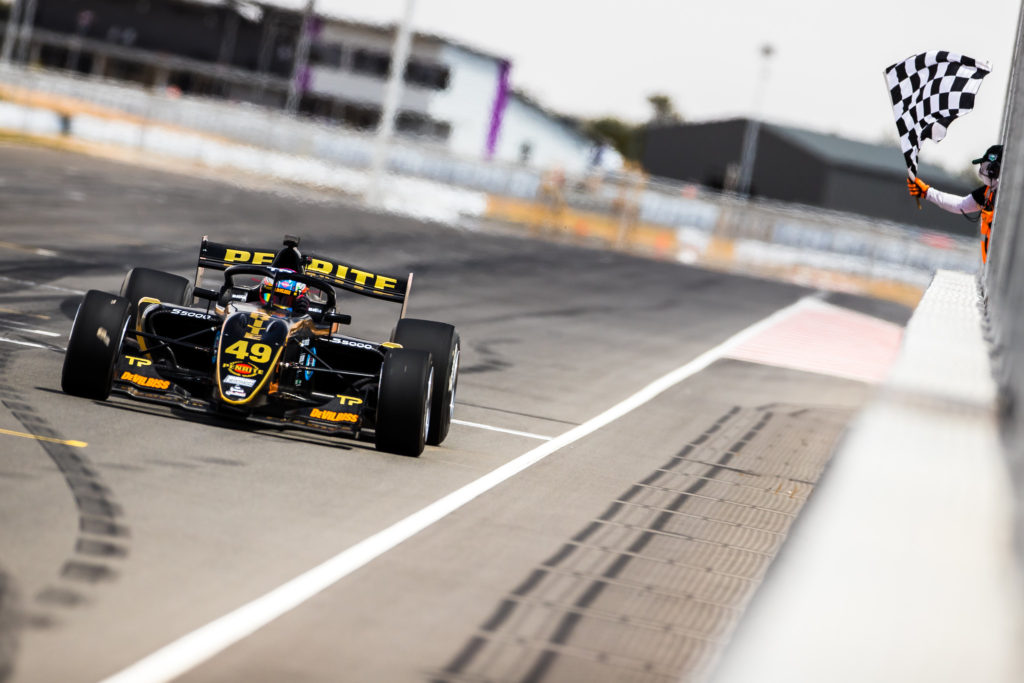
That two full-time Supercars drivers in Anton de Pasquale and James Golding raced at the weekend may be evidence that while it is unlikely S5000 will become an alternative to the main game, it may be for something like Super2 – which is likely to be more expensive for a full season to the tune of six-figures.
At the very least it will likely be a valuable addition to any full-time campaign elsewhere.
“Look at what Andre Heimgartner’s done; he’s solidified himself as a pretty high contender in Supercars and he’s doing that full time and also doing TCR,” Randle explained.
“It depends on calendars and if there are any clashes (Grand Prix aside, there are not).. but the dream goal would be to race in main game next year – but the odds are getting pretty small – and to do an S5000 campaign alongside. I wouldn’t think there’s anything wrong with that.
“At the end of the day nothing beats being able to practice your race craft – you can’t practice so much stuff on a test day, you can’t practice the pressure of practice of qualifying, of racing so I reckon we’ll see more Supercar guys hopping into these things down the road..”







